The start of something good
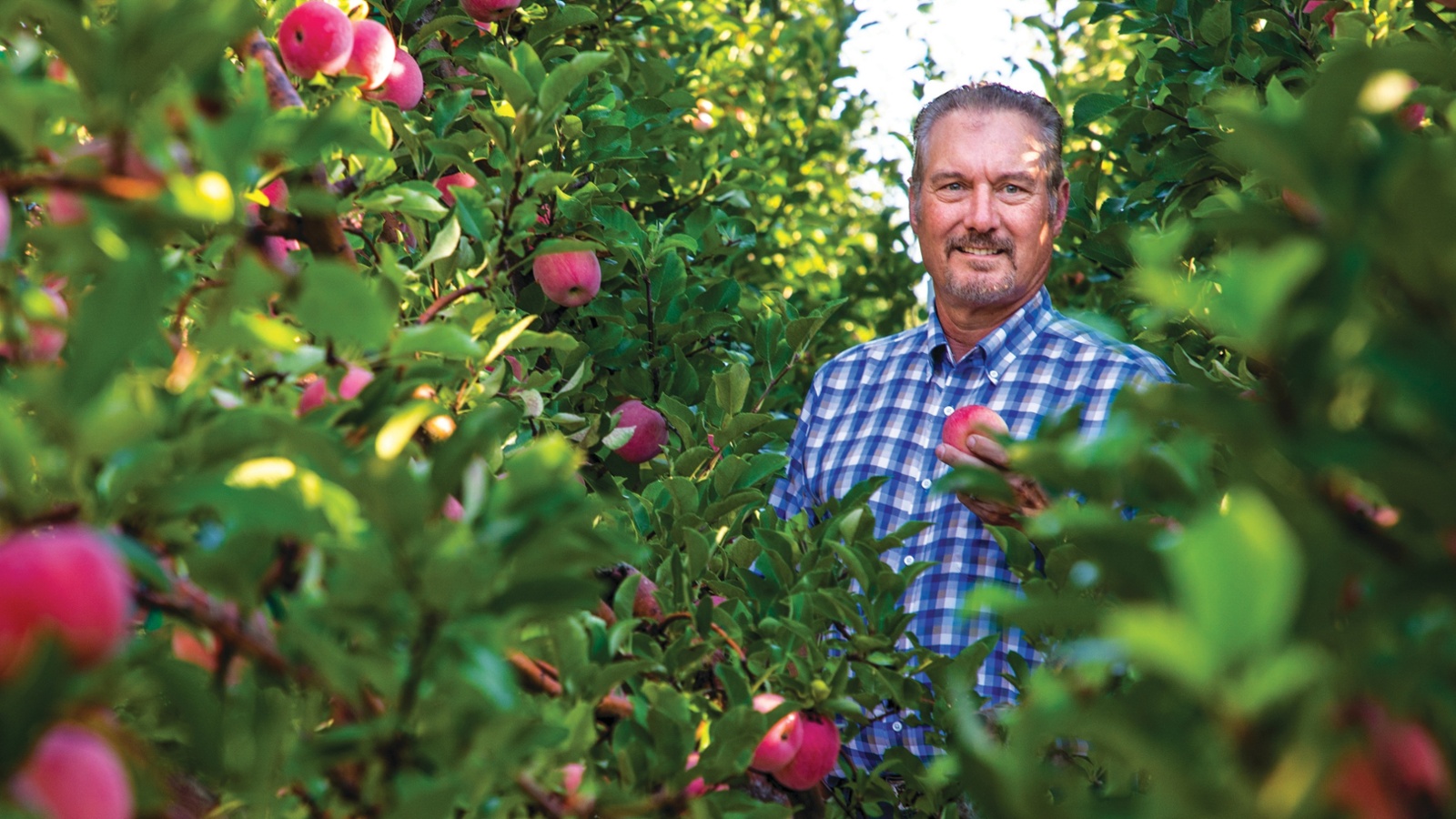
July/August 2022 California Bountiful magazine
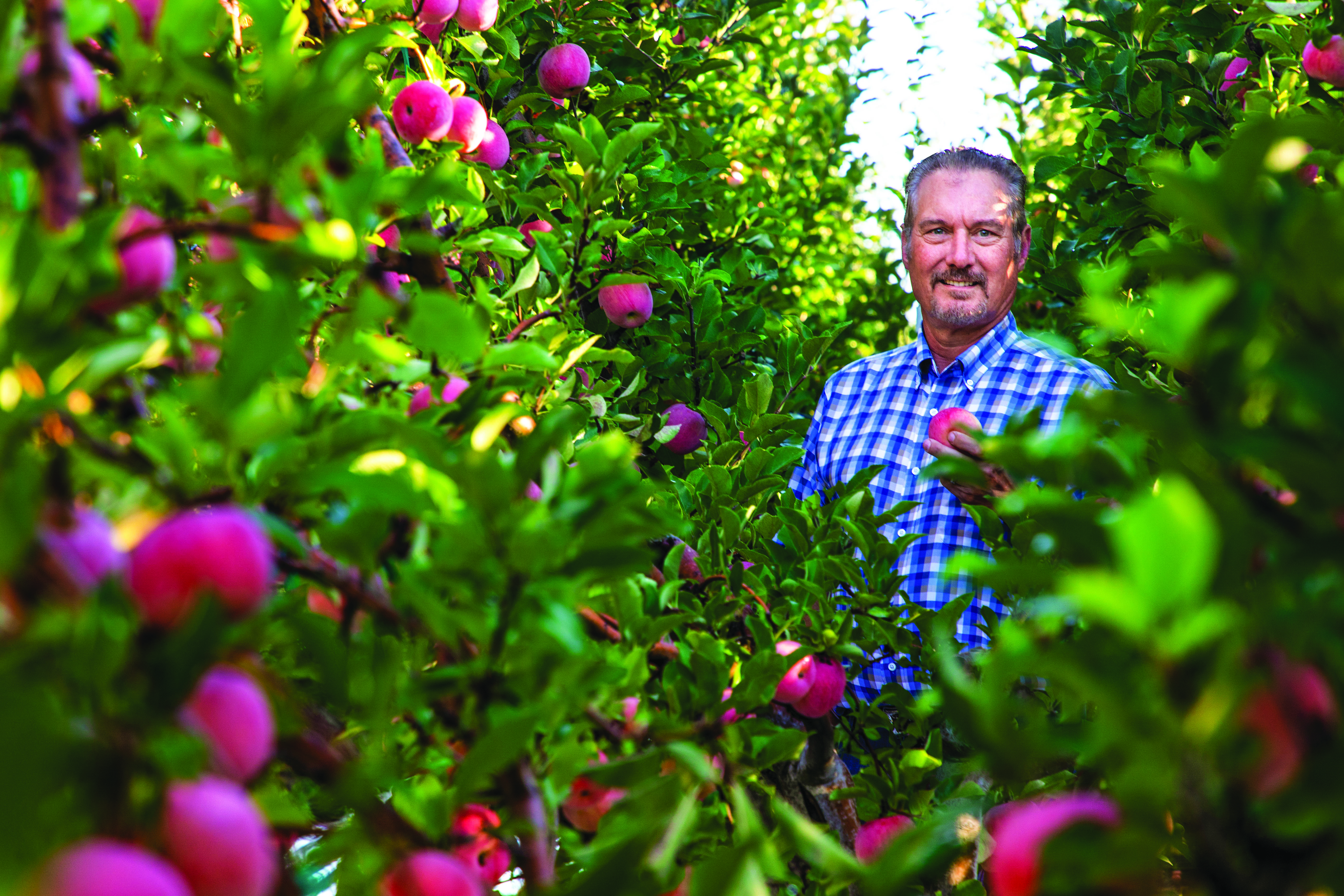
From orchard to 'oh, my,'
California apples delight
Story by Ching Lee
Photos by Lori Eanes
Thanks to modern storage techniques, you can still buy apples from the Pacific Northwest that were picked last season. But this time of year, you may want to seek out California's fresh, new crop.
California apples hit the market three to five weeks before fruit from Washington state, the nation's No. 1 apple producer. Just as supplies of year-ago apples are nearly depleted and imported apples from the Southern Hemisphere are waning, California farmers are ramping up the harvest of Gala apples, the earliest commercial variety to arrive in stores.
"Our niche is we provide the first fresh apple of the year," says San Joaquin County farmer Jeff Colombini, who's been growing apples for more than three decades.
Apples from the Evergreen State are kept in what's known as controlled-atmosphere storage facilities, so they can be sold long after apple season is over. But fruit from the Golden State is picked, packed and shipped, making them "the freshest apples on the market," says Todd Sanders, executive director of the California Apple Commission.
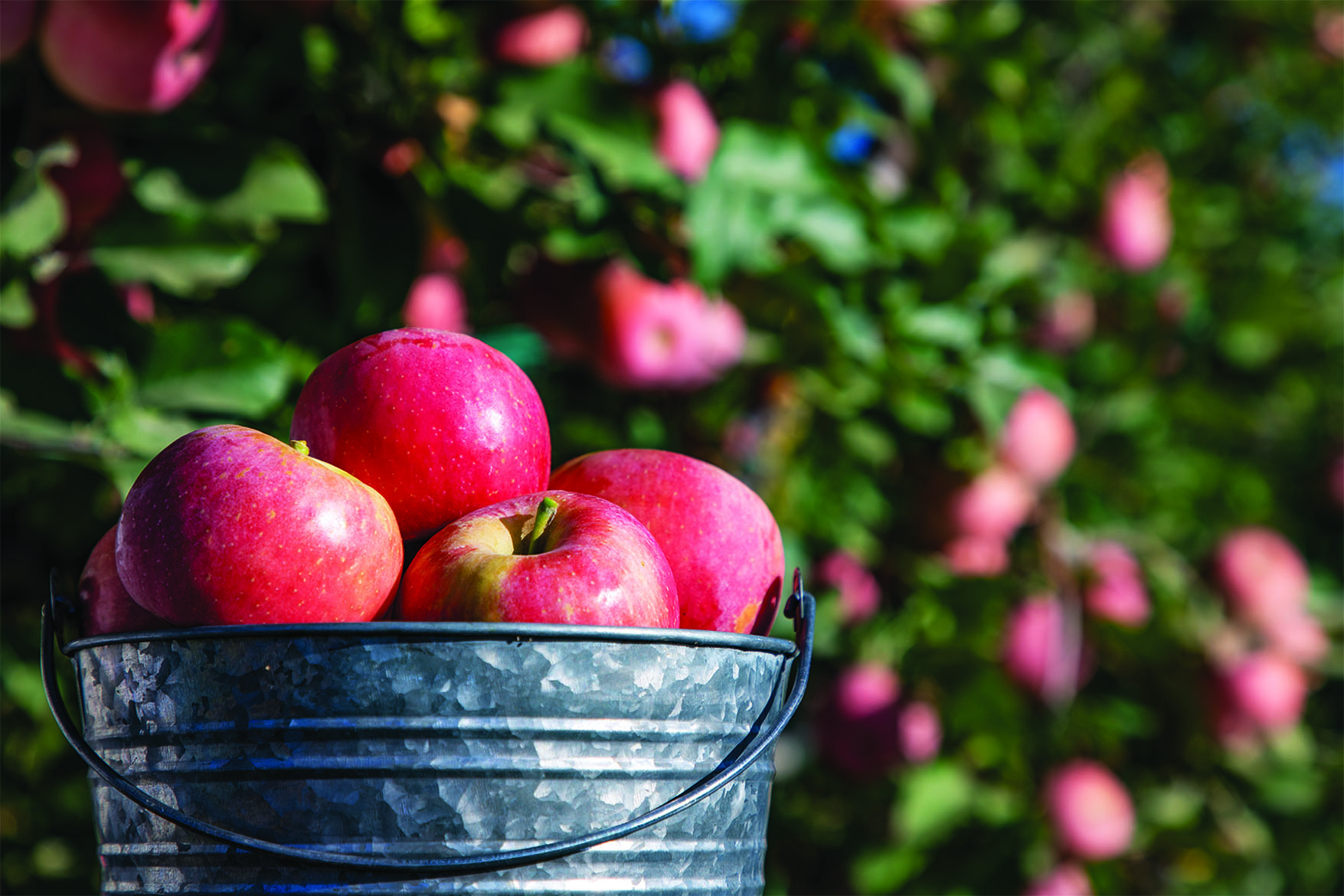
He recalls eating a Fuji apple—his favorite variety—right from Colombini's tree, struck by the "gigantic difference in the flavor and quality" of those apples compared to ones coming out of storage.
"If you eat an apple that is that fresh, it just changes your view," Sanders says. "You're like, 'Man, where has this apple been my whole life?'"
With about 12,000 acres in 2020, California remains the nation's fifth-largest apple producer, topped by Washington, New York, Michigan and Pennsylvania. Apples are grown in nearly every county in the state, though not all on a commercial scale.
Picking begins in the southern part of the state starting in July and tails off around November as harvest moves north. California apples are shipped all over the country, though once Washington starts its harvest, growers here typically turn their attention to supplying the Southwest, Colombini says.
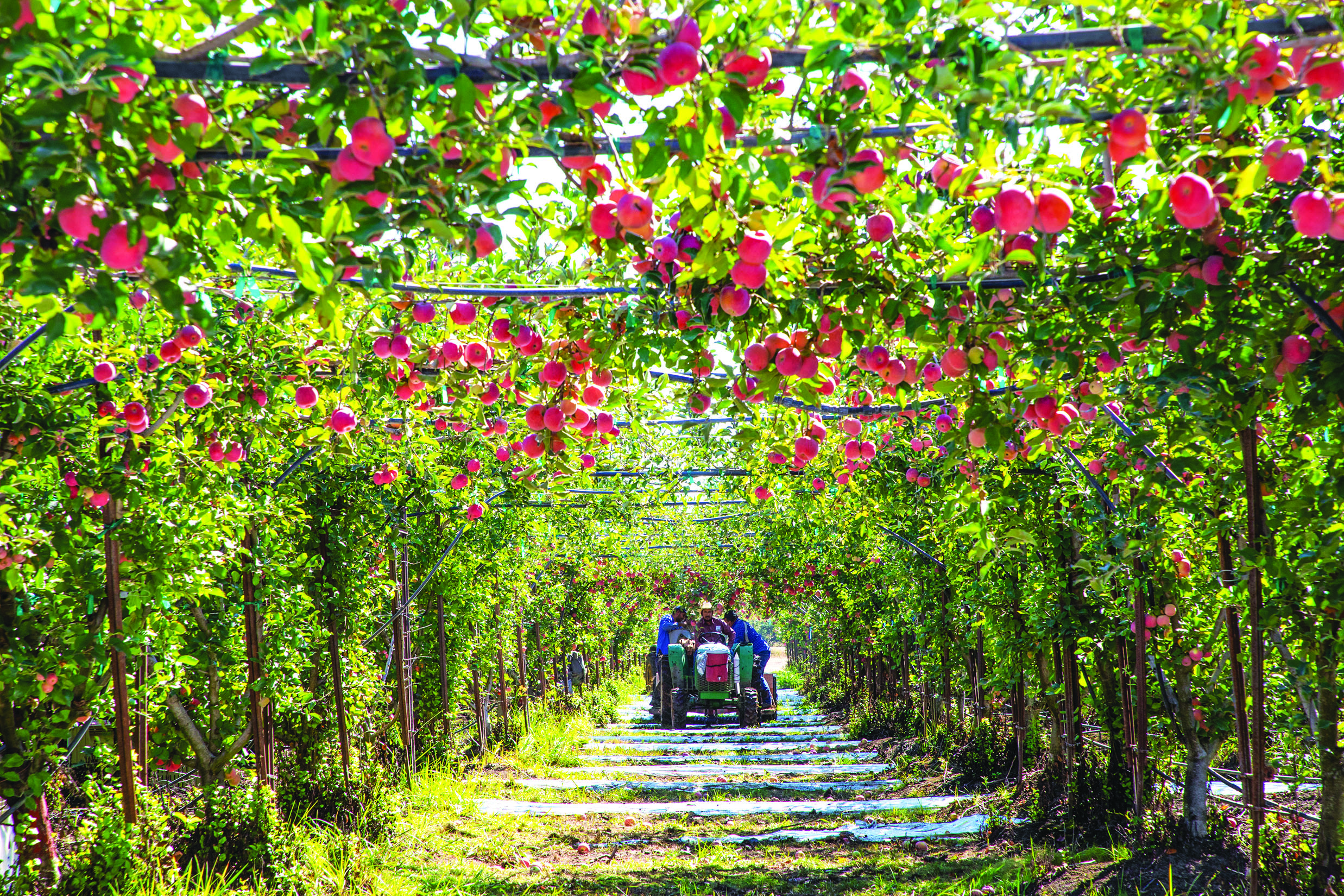
Apple of your eye?
Colombini grows apples in a region that's become the state's powerhouse for commercial apple production—and there's good reason. With its sunny days and river delta-aided cool nights, San Joaquin County can produce apples with the right mix of sweet flavor and color that shoppers favor. That's important, because in the apple business, red sells. Shoppers prefer apples with some rouge, associating the color with better-tasting fruit.
But here's a little secret: The absence of that fire-engine pigment is not necessarily an indicator that the apples aren't ripe or sweet.
"Color doesn't equal flavor," Colombini says.
When walking through his orchard looking for an apple to eat, he says he will often pick one that's slightly sunburned—characterized by a light-brown blemish that makes the fruit unmarketable—because he knows it will be sweet.
That's because apples love sunlight, which brings out their sugars and helps them develop anthocyanin, the red pigment in the fruit's peel. The caveat is that warm temperatures can reduce that pigment, even though the fruit may be perfectly ripe and sweet, Colombini says. Leaves blocking sunlight from reaching the fruit can also cause a lack of blush, Sanders points out.
Appearance matters in the grocery aisle, and shoppers want red in their apples, so retailers and buyers demand it, paying "significantly less" for apples that lack it, Colombini says.
In the southern San Joaquin Valley, where warmer temperatures make it more difficult to get the rosy color the market desires, it became unprofitable to grow varieties such as Fuji, Colombini says. Trying to turn their apples red, growers there would prune leaves and branches to get more sunlight into the canopy, but in doing so, the fruit would get sunburned.
Sanders points to how the Red Delicious—once the reigning apple variety in the U.S.—is no longer produced commercially in the state, though some orchards in cooler regions still grow it on a smaller scale.
"The Red Delicious doesn't do very well here because we just don't get the color," he says. "If you grew a Red Delicious apple here in this state, it wouldn't look like a traditional Red Delicious."

Golden State varieties
Of the more than 7,500 apple varieties grown throughout the world, the Golden State produces four main commercial varieties: Gala, Fuji, Granny Smith and Pink Lady. Smaller farms such as those in Apple Hill, an agritourism destination in El Dorado County, continue to grow older varieties such as the Black Arkansas apple, "which you really won't find in a supermarket," Sanders says.
How much an apple reddens depends on the variety, Colombini says. For example, Gala—now the nation's most widely grown apple—colors much better than Fuji, he notes. That could be why Gala has dethroned Red Delicious, because it does "get a really pretty red," he says. Even the traditionally bicolored Fuji has become ruddier complexioned in recent years, thanks to newer scarlet-hued varieties, he points out.
Cripps Pink, marketed as Pink Lady, benefits from being harvested in the fall, when temperatures drop, allowing it to color well, Colombini says. He calls it his favorite apple because of its "nice balance between sweetness and tartness."
Even though red varieties dominate the market, there's always been room for outliers such as Granny Smith, one of the most recognizable and beloved apples because of its distinctive green hue and tart flavor. Whereas colder temperatures in states such as Washington will eventually turn the Australian native a bit rubicund, Granny Smith grows "really well" in California, Sanders says.
"We get a solid green, and that's what retailers want," he says.
But he acknowledged there's room for growth. Sanders says retailers continue to look for new apple varieties, especially green ones that don't taste like Granny Smith. Getting a green sweet variety on the market, he says, would be "a game changer" for California, which grows "really good green apples." It would perhaps begin to change how shoppers view redness as a sign of ripeness and sweetness.
How to find and enjoy a great apple
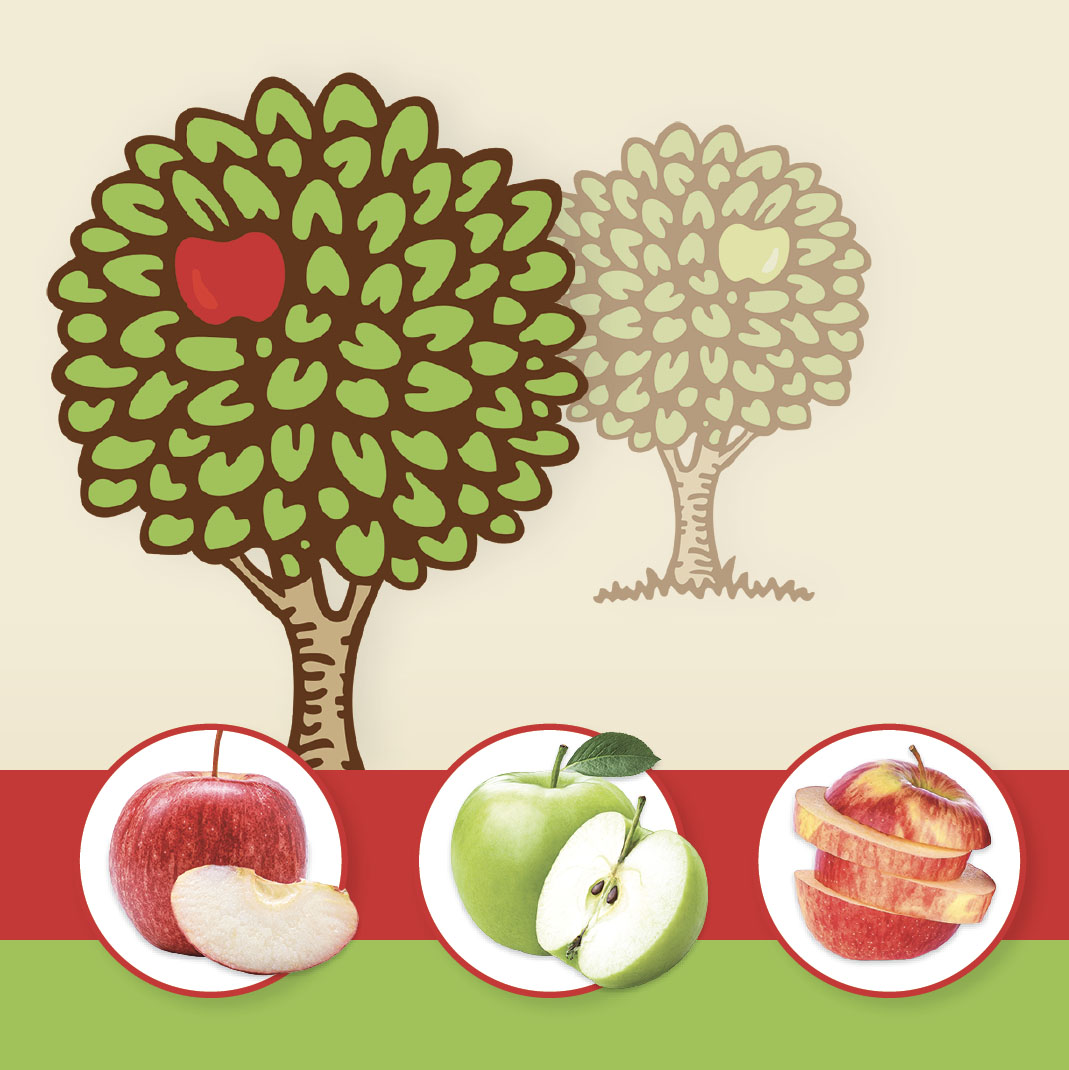
If red can be a red herring for sweet, flavorful apples, then what should you look for?
With apples that are mostly red with areas of green, such as Gala and Fuji, farmer Jeff Colombini says it's best to choose ones that have a creamy or light-green background. If the background looks more like a Granny Smith green, then the apple was probably picked too early. If it's a yellow background, then it was either picked overripe or it's been in storage too long. In either case, the apple will not have a great texture, he says.
Another misconception is that bigger is better. A smaller apple, he says, will have just as much flavor, crunch and sweetness as a larger one.
How do you like them apples? Colombini and Todd Sanders of the California Apple Commission say their favorite way is to eat them fresh.
Colombini says he also likes to put peeled and sliced apples in a baking dish with cinnamon and nutmeg, as if he's making apple pie without the crust, and then bake. This way "I'm not increasing my bad carb intake," he says. "To me, it's just as good without the pie crust, and it's very easy to make."
For breakfast almost every morning, Sanders says he likes to dice a Fuji apple into a bowl of cinnamon oatmeal with milk, and then microwave it. "Every bite has a ton of apple in it," he says. "It just adds so much flavor to it."

